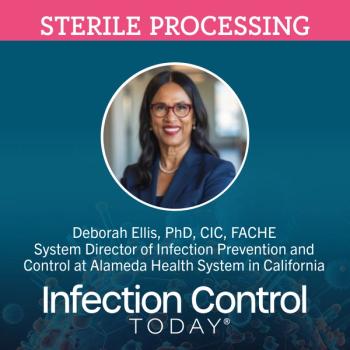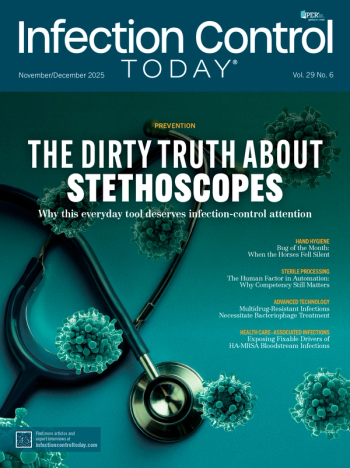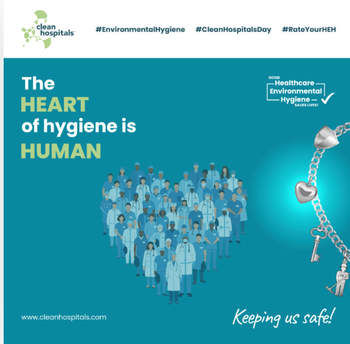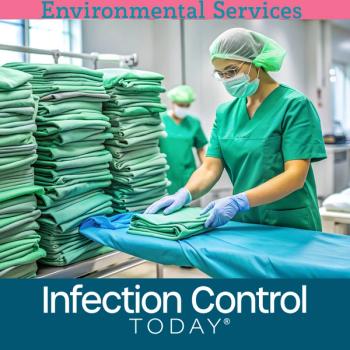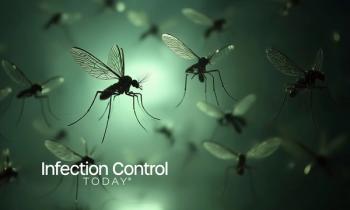
In the Wake of HICPAC: How APIC is Leading the Fight to Preserve National Infection Prevention Standards
The disbanding of HICPAC has left infection prevention experts scrambling to preserve national standards and ensure continuity amid growing concern over science-driven public health policy. Connie Steed, MSN, RN, CIC, FAPIC, speaks with ICT.
The Trump administration has disbanded a federal advisory committee that guided efforts to prevent the spread of infections in health care facilities.
The Healthcare Infection Control Practices Advisory Committee (HICPAC) established national standards for hand hygiene, mask-wearing, and isolating patients with infectious diseases that most US hospitals adhere to.
Infection Control Today® (ICT®) spoke with Connie Steed, MSN, RN, CIC, FAPIC, an infection prevention consultant and former president of the Association for Professionals in Infection Control and Epidemiology (APIC), about HICPAC's disbanding and its implications for national standards in infection control.
ICT: What was your initial reaction when you learned that the CDC had disbanded HICPAC, and how did you learn of the decision?
Connie Steed, MSN, RN, CIC, FAPIC: Initially, my reaction was one of sadness and disappointment.
Many of these recommendations became infection control standards and were incorporated into regulatory agency regulations. It was important to ensure that the guidelines were evidence-based, that if there was no evidence, you had expert opinion, and that there was a clear standard in this country for infection prevention and control. We still have those guidelines today.
But we're sort of in limbo right now. We do not completely understand or know the status of these guidelines that we've been working on. I was on a HICPAC and was a member of the isolation work group, a member of the personnel health work group, and both of those guidance work groups that develop recommendations, and then they go to HICPAC. That's how HICPAC works.
In November, we had a meeting, and some things were discussed. We're going to be moving on to being placed in the Federal Register at some point this year for public comment. And now, everything has essentially been embargoed. They put them out there in the CDC. When you open [the HICPAC website] and see that it says “archived.” You can still get to them, but it's much harder, and stuff like that. If they're archived like that, they won't be updated. And, of course, if it's not an actual guideline today, it's those for which we don't know the status. Then what will you do about updating guidelines when they need to be updated?
The question is, what process is not being communicated? And I think one of the reasons it hasn't is that the CDC likely doesn't know. I think they're waiting for the final appointment of the full-time CDC director, which has not been made yet. And they're so that they can't do anything, and there can't be any more communication or decisions made until the CDC director is appointed and in place, starting to work within their offices of responsibility. That's basically what we're waiting on right now.
We just released another statement, dated May 7, which recommends reinstating HICPAC. That's our initial approach. We still hope to have some influence, but we have some unknowns, such as the CDC director, and Congress is not yet done with its decision-making for the year. So, there may be an opportunity. So that's the stance we're taking. We issued a statement on March 26 regarding Robert F. Kennedy, and then we sent another one yesterday. And there have been some other ones, but those are the 2 most important ones.
ICT: Critics argue that this move politicizes public health and silences scientific guidance. Do you agree, and what message does this send to frontline healthcare workers?
CS: I agree with that because if we want our guidelines to be the best they can be, they need to be based as much as possible on clinical evidence and science. So when they decide to eliminate a nice Advisory Committee whose goal is to try to do the best they can with that, it's a concern. I think it got eliminated because it's not required by law. It's because it's not a regulation.
The Trump administration has issued Executive Order 14217, “Commencing the Reduction of Federal Bureaucracy.” Then, the concern I have is that I don't necessarily disagree that there is bureaucracy in the government. There might be something that needs to be looked at, but I think what's happened is that I want to know how these decisions were made. I would love to know how these decisions were made.
My suspicion is that one of the administration's focuses is reducing federal regulations and other requirements to make it less intensive and less costly for people to comply with the law. So, they start by eliminating things that aren't tied to the law.
For example, HICPAC is not subject to regulation. The CDC developed it to support their mission and goal of effective public health, community, and patient safety, particularly as it relates to infection control, infectious diseases, and antimicrobial resistance. NHSN is the surveillance system in place, which helped HICPAC evolve, and it was not cut, [which is] my perception.
Why do you think it didn't get cut?
ICT: Because they can't, not easily.
CS: That's right; they can't because the regulations, CMS, RECs, and other entities depend heavily on that data.
ICT: What do you believe must happen next to restore or replace HICPAC’s essential functions—and how can infection preventionists (IPs), professional societies, and the public support that effort?
CS: That's a very good question. I will tell you that that is the focus that APIC, SHEA, the Infectious Diseases Society of America (IDSA), the Pediatric Society, and the Infectious Disease Society have.
I represent APIC in this discussion as an infection preventionist, focusing on and lobbying for the reinstatement of HICPAC, which was the rationale behind the communication sent out [on May 7, 2025]. And SHEA and APIC have developed a small work group of individuals. APIC has a few, and SHEA has a few. I am part of that work group, and we are focused on achieving that goal. If we can't do that, then we would have to consider other steps, because our goal is to continue pushing this envelope so that we, first and foremost, understand what the CDC plans to do to maintain infection prevention and control standards.
Andrew Nixon from HHS is the communications director, and he said, “The decision to disband HICPAC was based on President Trump's executive order to reduce the federal workforce. “The executive order instructed advisers to identify unnecessary government entities and federal advisory committees that should be terminated on the grounds that they are unnecessary. [The] CDC is committed to maintaining the highest standards of infection control and will continue its mission to protect public health and collaborate closely with health care professionals and partners.”
That implies that there will be continued, ongoing collaboration, and they will continue the mission. The problem is that we're currently in limbo. We don't know how, and that can't be established until they have a CDC director.
It doesn't seem to be a priority right now, and that's one of the things we want to push for. What people can do is put it on their site. They have an action location, and I wrote to my Senator, Lindsey Graham, well before they released this information, when I heard that the CDC and other federal agencies might be affected. And my concern, of course, was public health, epidemiology, and infection control. So, I took it upon myself, as a citizen in his state, to write him a communication about my concern, and of course, I received a standard letter in return.
What was going to happen to all the work? They said they could not speak about that until they had a full-time director, so that those things could be fully vetted and decisions made. And so, ironically enough, we got told last Friday [May 2], but they terminated HICPAC on March 31.
That's our goal: to ensure that it continues. So, what we must do, with some persistence, is to continue to communicate and get our voices heard; eventually, that will happen. The first step is to appoint the CDC director. Until that gets done, I don't see any official decision-making or communication about how and what you know to be done. So that's our first goal. Then, if it doesn't get reinstated, how will the CDC address this? How is that going to be dealt with? They may employ an alternative method of communication with these professional organizations, as HICPAC is primarily composed of infectious disease physicians from SHEA, and infection preventionists are also represented on that committee.
Additionally, you have liaisons from various professional organizations that have a vested interest and sit in. So, they may take a different approach. Call it something else; we do not know.
ICT: What role does APIC see itself playing in preserving national infection prevention standards in the absence of HICPAC’s leadership and guidance?
CS: That's a very good question, and I would say that first and foremost, our priority is to get hit pack reinstated, or ensure that there is a method by which standard of practice are established and developed now APIC and SHEA and IDSA, we have compendiums, we have guidelines, and so those will continue to, of course, evolve as they get reviewed and updated. Our concern is not having that connection with the federal government to ensure that they're considered a standard of practice, and that's a connection that needs to occur. Therefore, we will not let the standards of practice for preventing infections go away. That's not going to happen.
Our first priority is to get it reinstated. If it is not reinstated, then ensure that there is a process in place for the CDC to fulfill that part of its mission. APIC and SHEA will continue to support and collaborate with the CDC to ensure that guidelines are maintained. That's how I see it.
We hope there is a clear process for that, not something that's currently unclear. Like I said, we don't know. We've got these things in limbo. A lot of work's been done on that we don't want to lose, and we hope to find a way to get those across the finish line and then establish a process for ongoing revisions of guidelines.
Our professional responsibility is to our membership: To ensure that we maintain effective standards of practice and guidelines because that's what we all need. IPs need that to help ensure their organizations' safety. And so, it's just part of what APIC, SHEA, IDSA, and the Pediatric Infectious Disease Society will do.
ICT: Is there anything else you'd like to add?
CS: There's just a lot going on, and IPs need to stay focused on their role and understand that APIC and SHEA are there to follow through with this vacuum that we have right now. We need answers and the establishment of a clear path to ensure guidelines are maintained, and that's our goal. They can support that effort by staying up-to-date with what APIC posts on the website about these plans of action, and also by keeping up with the APIC newsletter, which is now being published more frequently than ever before.
APIC will continue to communicate with its membership about what is happening. And if IPs have questions, they should ask their APIC chapter presidents, and then that can be fed up to national, someone like me who has some knowledge about what's been going on. It was already established.
For instance, [the week of May 12], I will give a presentation for Wisconsin's APIC chapter on the isolation work group and the status of those guidelines. With this happening, I've had to adjust my presentation, but I think we're going to get more and more requests for people like me, who have the understanding to educate the APIC community.
APIC’s goal is to do that as well. And I'm very passionate about this. So, if a chapter asks me to talk to people and do that, I will do it. I'm sure that many other APIC leaders will do the same when they're informed. I'm excited about this small work group. They have APIC and SHEA leaders that we pull together to stay on top of this, and it is a privilege and honor to be part of that.
This interview has been edited for clarity and length.
Newsletter
Stay prepared and protected with Infection Control Today's newsletter, delivering essential updates, best practices, and expert insights for infection preventionists.

